The latest image of the Sun taken by Simon Dawes.
NEVER LOOK AT THE SUN DIRECTLY. Please click here for solar observing safely.

Astronomy every Thursday
The latest image of the Sun taken by Simon Dawes.
NEVER LOOK AT THE SUN DIRECTLY. Please click here for solar observing safely.

A fantastic image of Comet C/2019 L3 (ATLAS) in Gemini taken by Simon Dawes on the 24th April 2022 from Bexleyheath in Kent.
Simon has included detail about how and when he acquired the image on the photo below showing the comet which is the fuzzy round shape in the centre of the image.
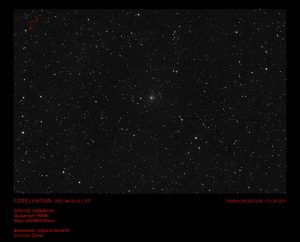
Comet C/2019 L3 (ATLAS) was discovered on the 9th of June 2019 by the ATLAS program.
Whilst CMHASD member views of Venus & Jupiter from the UK were blocked by cloud, two superb images of Venus & Jupiter were captured in the early morning skies of the 28th & 30th April 2022 by member Richard Bohner in Arizona, USA.
The first image taken on the 28th at 04:30 MST was acquired using a Canon 6D, ISO 500 and an 8 second exposure time. Jupiter is on the left and Venus on the right and only 2.3 degrees apart.
The second image, taken on the 30th at 05:00 MST (using a Canon 6D, ISO 500 and a 6 second exposure time) shows Venus & Jupiter appearing even closer together, in fact very close. The planets were separated by the same angular distance as a full moon: about 1/2 degree!!! Three moons of Jupiter; Ganymede, Io and Callisto can also be seen in the 2nd image.
The Venus-Jupiter conjunction happens about once a year but this year the two planets appeared closer than they usually do. The last time the two planets were closer than this year's conjunction was in August 2016 but it was more difficult to see since they were closer to the sun. The next time they will get this close is in 2039.
Jupiter & Venus 28th April 2022
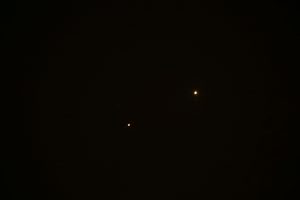
Jupiter & Venus 30th April 2022

Although Venus and Jupiter appear next to each other in the sky they are nowhere near each other in space. The actual orbit of the planets is around 430 million miles apart (690 million km) nearly five times the Earth–sun distance!
You can also understand why the ancients called planets wanderers too.
Oh my word, what a fortunate man member Martin Crow was last evening whilst out Kayaking on the river near Burnham on Crouch in Essex. Martin got to witness something very rare and absolutely stunning; 3 rainbows together!!! Two rainbows are often seen by people but 3 rainbows or the beginnings of a 3rd is a rare sight to see.
Luckily Martin captured this special event on his phone, see below and member Honor Wheeler explained the 3rd rainbow ''It's a reflection of the main rainbow from the water reflecting back into the sky. A reflection bow. Super capture lucky you''.
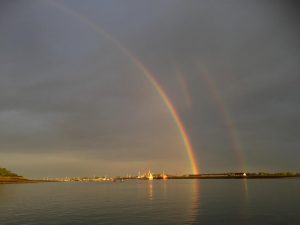
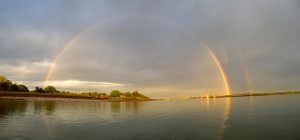
The Sun on the 30th April 2022 taken by Simon Dawes. As you can see the Sun was still 'active' re sunspots on that day.
As of today (5th May) we are now up to AR3006 and in the past 24 hours sunspot AR3004 has produced over 18 solar flares (15+ C-class flares and 3 M-flares).
NEVER LOOK AT THE SUN DIRECTLY. Please click here for solar observing safely.
The Sun on the 30th April 2022
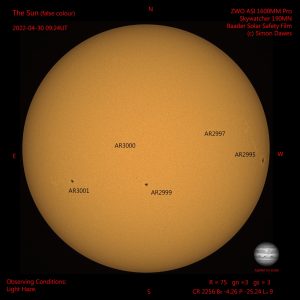
Planet Mercury at the bottom & M45 (The Pleiades) above right taken on the 28th April 2022 at 2015 local time MST in Arizona, USA. Richard acquired this splendid image using a Canon 6D, 400mm tele f2.8, ISO 800 and 12 second exp.
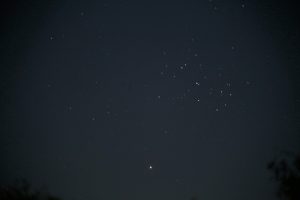
The latest set of observations by Simon for the ExoClock project of the exoplanet WASP-92b which orbits its parent star WASP-92, an F7 star, every 2.17 days.
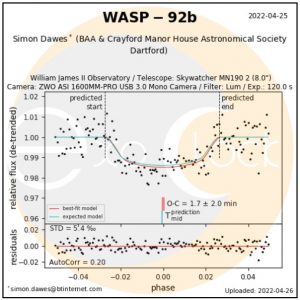
Dr. Mike Rushton took advantage of some clear skies recently (25th April 2022) and took these 3 super deepsky images using his eVscope of Messier 13, Messier 51 and the Bow Tie Nebula.
Messier 13 (M13) also designated NGC 6205 and also called the Great Globular Cluster in Hercules and the Hercules Globular Cluster, is a globular cluster of a several hundred thousand stars in the constellation of Hercules.
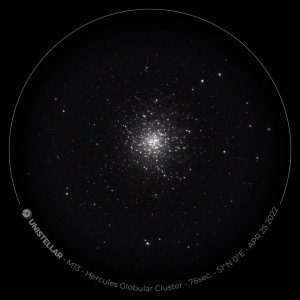
Messier 51, known as The Whirlpool Galaxy and as Messier 51a, M51a, and NGC 5194, is a spiral galaxy found in the constellation Canes Venatici, M51 was the first galaxy to be classified as a spiral galaxy and is 31 million light-years away from Earth.
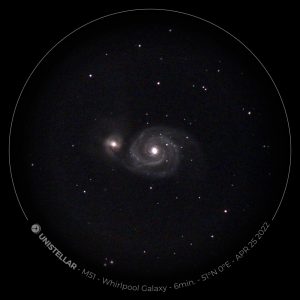
The Bow Tie Nebula also designated NGC 40 and Caldwell 2 is a planetary nebula discovered by William Herschel in 1788. It is composed of hot gas around a dying star. The nebula gets its name from the fact it has an intriguing bow-tie shape.
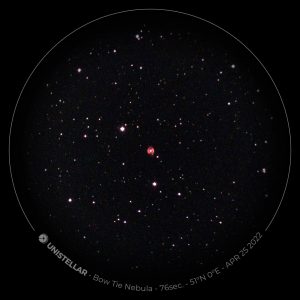
On Saturday the 20th August CMHASD members will be at Hall Place & Gardens to offer safe views of our nearest visible star the Sun. Please come and see us!
https://www.hallplace.org.uk/event/solar-observing-4/
Please note this event is weather dependent.
The 30th November 2021 was Crayford Manor House Astronomical Society Dartford's 60th Anniversary however due to Covid the society was unable to celebrate at that time. Roll on to the 23rd April 2022 and we finally managed to have our 60th Anniversary celebratory dinner at The Boathouse, Danson Park, Bexleyheath.

Member Diane Clarke wrote 'From the early evening of Saturday the 23rd of April 2022, a dinner was held at the Boathouse Danson Park to belatedly celebrate the Societies 60th anniversary.
Several members and their families came along but unfortunately our numbers were somewhat depleted due to some members and their families succumbing to summer colds and Covid.
But in spite of this we had a very enjoyable evening regaling each other with memories and tales of various Society lectures, social gatherings and outings, including our last summer barbeque. There was also talk about holding another barbeque later this year.
These photos give a flavour of the evening’s events that included a presentation from the Societies president Mr John Archer that included a look back at the Societies 50th Anniversary meal.
As can be seen John gave his speech to an appreciative audience.
Eventually we had to leave so everybody got together for the group photo, and with the evening’s festivities coming to a close we left in good spirits.
With several members deciding to continue the evening‘s festivities at another establishment.'
Below is a slideshow of photos taken by Diane Clarke & John Archer of the evening.
The society would like to thank Diane Clarke, John Archer and Malcolm Gough for organising the event and to Diane & John for sharing their photos.
[ngg src="galleries" ids="60" display="basic_slideshow"]